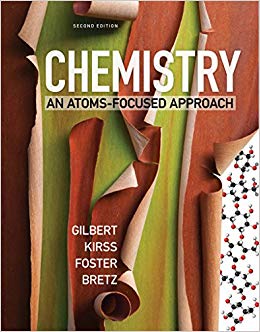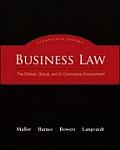Solution Manual for Chemistry: An Atoms-Focused Approach (Second Edition) Second Edition
$35.00 Original price was: $35.00.$26.50Current price is: $26.50.
Solution Manual for Chemistry: An Atoms-Focused Approach (Second Edition) Second Edition
Instant download Solution Manual for Chemistry: An Atoms-Focused Approach Second Edition pdf docx epub after payment.

Product details:
- ISBN-10 : 0393614050
- ISBN-13 : 978-0393614053
- Author: Natalie Foster; Rein V. Kirss; Thomas R. Gilbert
The Second Edition’s new co author, Stacey Lowery Bretz, uses visualization tools―based on Chemistry Education Research, and focused on the particulate nature of matter―to help students self assess what they know before, during, and after each chapter. Smartwork5 allows instructors to use this pedagogy as a diagnostic, and students receive hints and answer specific feedback within the text. New ChemTour Animations support visualization at a molecular level, and are integrated throughout the media package.
Table of contents:
- Chapter 1: Matter and Energy: An Atomic Perspective
- 1.1 Exploring the Particulate Nature of Matter
- 1.2 COAST: A Framework for Solving Problems
- 1.3 Classes and Properties of Matter
- 1.4 States of Matter
- 1.5 Forms of Energy
- 1.6 Formulas and Models
- 1.7 Expressing Experimental Results
- 1.8 Unit Conversions and Dimensional Analysis
- 1.9 Analyzing Experimental Results
- Summary
- Chapter 2: Atoms, Ions, and Molecules: The Building Blocks of Matter
- 2.1 When Projectiles Bounced Off Tissue Paper: The Rutherford Model of Atomic Structure
- 2.2 Nuclides and Their Symbols
- 2.3 Navigating the Periodic Table
- 2.4 The Masses of Atoms, Ions, and Molecules
- 2.5 Moles and Molar Masses
- 2.6 Mass Spectrometry: Determining Molecular Masses
- Summary
- Chapter 3: Atomic Structure: Explaining the Properties of Elements
- 3.1 Nature’s Fireworks and the Electromagnetic Spectrum
- 3.2 Atomic Spectra
- 3.3 Particles of Light: Quantum Theory
- 3.4 The Hydrogen Spectrum and the Bohr Model
- 3.5 Electrons as Waves
- 3.6 Quantum Numbers
- 3.7 The Sizes and Shapes of Atomic Orbitals
- 3.8 The Periodic Table and Filling Orbitals
- 3.9 Electron Configurations of Ions
- 3.10 The Sizes of Atoms and Ions
- 3.11 Ionization Energies and Photoelectron Spectroscopy
- 3.12 Electron Affinities
- Summary
- Chapter 4: Chemical Bonding: Understanding Climate Change
- 4.1 Chemical Bonds and Greenhouse Gases
- 4.2 Electronegativity, Unequal Sharing, and Polar Bonds
- 4.3 Naming Compounds and Writing Formulas
- 4.4 Lewis Symbols and Lewis Structures
- 4.5 Resonance
- 4.6 The Lengths and Strengths of Covalent Bonds
- 4.7 Formal Charge: Choosing among Lewis Structures
- 4.8 Exceptions to the Octet Rule
- 4.9 Vibrating Bonds and the Greenhouse Effect
- Summary
- Chapter 5: Bonding Theories: Explaining Molecular Geometry
- 5.1 Biological Activity and Molecular Shape
- 5.2 Valence-Shell Electron-Pair Repulsion Theory
- 5.3 Polar Bonds and Polar Molecules
- 5.4 Valence Bond Theory and Hybrid Orbitals
- 5.5 Molecules with Multiple “Central” Atoms
- 5.6 Chirality and Molecular Recognition
- 5.7 Molecular Orbital Theory
- Summary
- Chapter 6: Intermolecular Forces: Attractions between Particles
- 6.1 Intramolecular Forces versus Intermolecular Forces
- 6.2 London Dispersion Forces
- 6.3 Interactions Involving Polar Molecules
- 6.4 Trends in Solubility
- 6.5 Phase Diagrams: Intermolecular Forces at Work
- 6.6 Some Remarkable Properties of Water
- Summary
- Chapter 7: Stoichiometry: Mass Relationships and Chemical Reactions
- 7.1 Chemical Reactions and the Carbon Cycle
- 7.2 Writing Balanced Chemical Equations
- 7.3 Stoichiometric Calculations
- 7.4 Limiting Reactants and Percent Yield
- 7.5 Percent Composition and Empirical Formulas
- 7.6 Comparing Empirical and Molecular Formulas
- 7.7 Combustion Analysis
- Summary
- Chapter 8: Reactions in Aqueous Solutions: Chemistry of the Hydrosphere
- 8.1 Solutions and Their Concentrations
- 8.2 Dilutions
- 8.3 Electrolytes and Nonelectrolytes
- 8.4 Acid–Base Reactions: Proton Transfer
- 8.5 Titrations
- 8.6 Precipitation Reactions
- 8.7 Oxidation–Reduction Reactions: Electron Transfer
- Summary
- Chapter 9: Properties of Gases: The Air We Breathe
- 9.1 An Invisible Necessity: The Properties of Gases
- 9.2 Effusion, Diffusion, and the Kinetic Molecular Theory of Gases
- 9.3 Atmospheric Pressure
- 9.4 Relating P, T, and V: The Gas Laws
- 9.5 The Combined Gas Law
- 9.6 Ideal Gases and the Ideal Gas Law
- 9.7 Densities of Gases
- 9.8 Gases in Chemical Reactions
- 9.9 Mixtures of Gases
- 9.10 Real Gases
- Summary
- Chapter 10: Thermochemistry: Energy Changes in Chemical Reactions
- 10.1 Energy as a Reactant or Product
- 10.2 Transferring Energy and Doing Work
- 10.3 Enthalpy and Enthalpy Changes
- 10.4 Heating Curves and Heat Capacity
- 10.5 Enthalpies of Reaction and Calorimetry
- 10.6 Hess’s Law and Standard Enthalpies of Reaction
- 10.7 Enthalpies of Reaction from Enthalpies of Formation and Bond Energies
- 10.8 Energy Changes When Substances Dissolve
- 10.9 More Applications of Thermochemistry
- Summary
- Chapter 11: Properties of Solutions: Their Concentrations and Colligative Properties
- 11.1 Osmosis: “Water, Water, Everywhere”
- 11.2 Osmotic Pressure and the van ’t Hoff Factor
- 11.3 Vapor Pressure
- 11.4 Solutions of Volatile Substances
- 11.5 More Colligative Properties of Solutions
- 11.6 Henry’s Law and the Solubility of Gases
- Summary
- Chapter 12: Thermodynamics: Why Chemical Reactions Happen
- 12.1 Spontaneous Processes
- 12.2 Entropy and the Second Law of Thermodynamics
- 12.3 Absolute Entropy and Molecular Structure
- 12.4 Applications of the Second Law
- 12.5 Calculating Entropy Changes
- 12.6 Free Energy
- 12.7 Temperature and Spontaneity
- 12.8 Driving the Human Engine: Coupled Reactions
- Summary
- Chapter 13: Chemical Kinetics: Clearing the Air
- 13.1 Cars and Air Quality
- 13.2 Reaction Rates
- 13.3 Effect of Concentration on Reaction Rate
- 13.4 Reaction Rates, Temperature, and the Arrhenius Equation
- 13.5 Reaction Mechanisms
- 13.6 Catalysts
- Summary
- Chapter 14: Chemical Equilibrium: Equal but Opposite Reaction Rates
- 14.1 The Dynamics of Chemical Equilibrium
- 14.2 Writing Equilibrium Constant Expressions
- 14.3 Relationships between Kc and Kp Values
- 14.4 Manipulating Equilibrium Constant Expressions
- 14.5 Equilibrium Constants and Reaction Quotients
- 14.6 Heterogeneous Equilibria
- 14.7 Le Châtelier’s Principle
- 14.8 Calculations Based on K
- 14.9 Equilibrium and Thermodynamics
- 14.10 Changing K with Changing Temperature
- Summary
- Chapter 15: Acid–Base Equilibria: Proton Transfer in Biological Systems
- 15.1 Acids and Bases: A Balancing Act
- 15.2 Acid Strength and Molecular Structure
- 15.3 Strong and Weak Bases
- 15.4 Conjugate Pairs
- 15.5 pH and the Autoionization of Water
- 15.6 Ka, Kb, and the Ionization of Weak Acids and Bases
- 15.7 Calculating the pH of Acidic and Basic Solutions
- 15.8 Polyprotic Acids
- 15.9 Acidic and Basic Salts
- Summary
- Chapter 16: Additional Aqueous Equilibria: Chemistry and the Oceans
- 16.1 Ocean Acidification: Equilibrium under Stress
- 16.2 The Common-Ion Effect
- 16.3 pH Buffers
- 16.4 Indicators and Acid—Base Titrations
- 16.5 Lewis Acids and Bases
- 16.6 Formation of Complex Ions
- 16.7 Hydrated Metal Ions as Acids
- 16.8 Solubility Equilibria
- Summary
- Chapter 17: Electrochemistry: The Quest for Clean Energy
- 17.1 Running on Electrons: Redox Chemistry Revisited
- 17.2 Electrochemical Cells
- 17.3 Standard Potentials
- 17.4 Chemical Energy and Electrical Work
- 17.5 A Reference Point: The Standard Hydrogen Electrode
- 17.6 The Effect of Concentration on Ecell
- 17.7 Relating Battery Capacity to Quantities of Reactants
- 17.8 Corrosion: Unwanted Electrochemical Reactions
- 17.9 Electrolytic Cells and Rechargeable Batteries
- 17.10 Fuel Cells
- Summary
- Chapter 18: The Solid State: A Particulate View
- 18.1 Stronger, Tougher, Harder
- 18.2 Structures of Metals
- 18.3 Alloys
- 18.4 Metallic Bonds and Conduction Bands
- 18.5 Semiconductors
- 18.6 Structures of Some Crystalline Nonmetals
- 18.7 Salt Crystals: Ionic Solids
- 18.8 Ceramics: Useful, Ancient Materials
- 18.9 X-ray Diffraction: How We Know Crystal Structures
- Summary
- Chapter 19: Organic Chemistry: Fuels, Pharmaceuticals, and Modern Materials
- 19.1 Carbon: The Stuff of Daily Life
- 19.2 Alkanes
- 19.3 Alkenes and Alkynes
- 19.4 Aromatic Compounds
- 19.5 Amines
- 19.6 Alcohols, Ethers, and Reformulated Gasoline
- 19.7 Aldehydes, Ketones, Carboxylic Acids, Esters, and Amides
- 19.8 A Brief Survey of Isomers
- Summary
- Chapter 20: Biochemistry: The Compounds of Life
- 20.1 Composition, Structure, and Function: Amino Acids
- 20.2 Protein Structure and Function
- 20.3 Carbohydrates
- 20.4 Lipids
- 20.5 Nucleotides and Nucleic Acids
- 20.6 From Biomolecules to Living Cells
- Summary
- Chapter 21: Nuclear Chemistry: The Risks and Benefits
- 21.1 Decay Modes of Radionuclides
- 21.2 Rates of Radioactive Decay
- 21.3 Energy Changes in Radioactive Decay
- 21.4 Making New Elements
- 21.5 Nuclear Fusion and the Origin of the Elements
- 21.6 Nuclear Fission
- 21.7 Measuring Radioactivity
- 21.8 Biological Effects of Radioactivity
- 21.9 Medical Applications of Radionuclides
- Summary
- Chapter 22: The Main Group Elements: Life and the Periodic Table
- 22.1 Main Group Elements and Human Health
- 22.2 Periodic Properties of Main Group Elements
- 22.3 Major Essential Elements
- 22.4 Trace and Ultratrace Essential Elements
- 22.5 Nonessential Elements
- 22.6 Elements for Diagnosis and Therapy
- Summary
- Chapter 23: Transition Metals: Biological and Medical Applications
- 23.1 Transition Metals in Biology: Complex Ions
- 23.2 Naming Complex Ions and Coordination Compounds
- 23.3 Polydentate Ligands and Chelation
- 23.4 Crystal Field Theory
- 23.5 Magnetism and Spin States
- 23.6 Isomerism in Coordination Compounds
- 23.7 Coordination Compounds in Biochemistry
- 23.8 Coordination Compounds in Medicine
- Summary
- Appendix 1: Mathematical Procedures
- Appendix 2: SI Units and Conversion Factors
- Appendix 3: The Elements and Their Properties
- Appendix 4: Chemical Bonds and Thermodynamic Data
- Appendix 5: Equilibrium Constants
- Appendix 6: Standard Reduction Potentials
- Appendix 7: Naming Organic Compounds
- Glossary
- Answers to Particulate Review, Concept Tests, and Practice Exercises
- Answers to Selected End-of-Chapter Questions and Problems
- Credits
- Index
People also search:
Chemistry: An Atoms-Focused Approach Second Edition
Chemistry: An Atoms-Focused Approach Second Edition pdf
Chemistry: An Atoms-Focused Approach
when two atoms approach each other
|
chemistry an atoms-focused approach third edition
|
Related products
Solution Manual
Solution Manual for Data Structures and Other Objects Using C++, 4/E Michael Main, Walter Savitch
Solution Manual
Solution Manual
Solution Manual for Absolute C++, 5/E 5th Edition Walter Savitch
Solution Manual
Solution Manual
Prentice Hall’s Federal Taxation 2014 Comprehensive Rupert 27th Edition Solutions Manual
Solution Manual
Solution manual for Accounting: Tools for Business Decision Making Kimmel Weygandt Kieso 5th Edition











